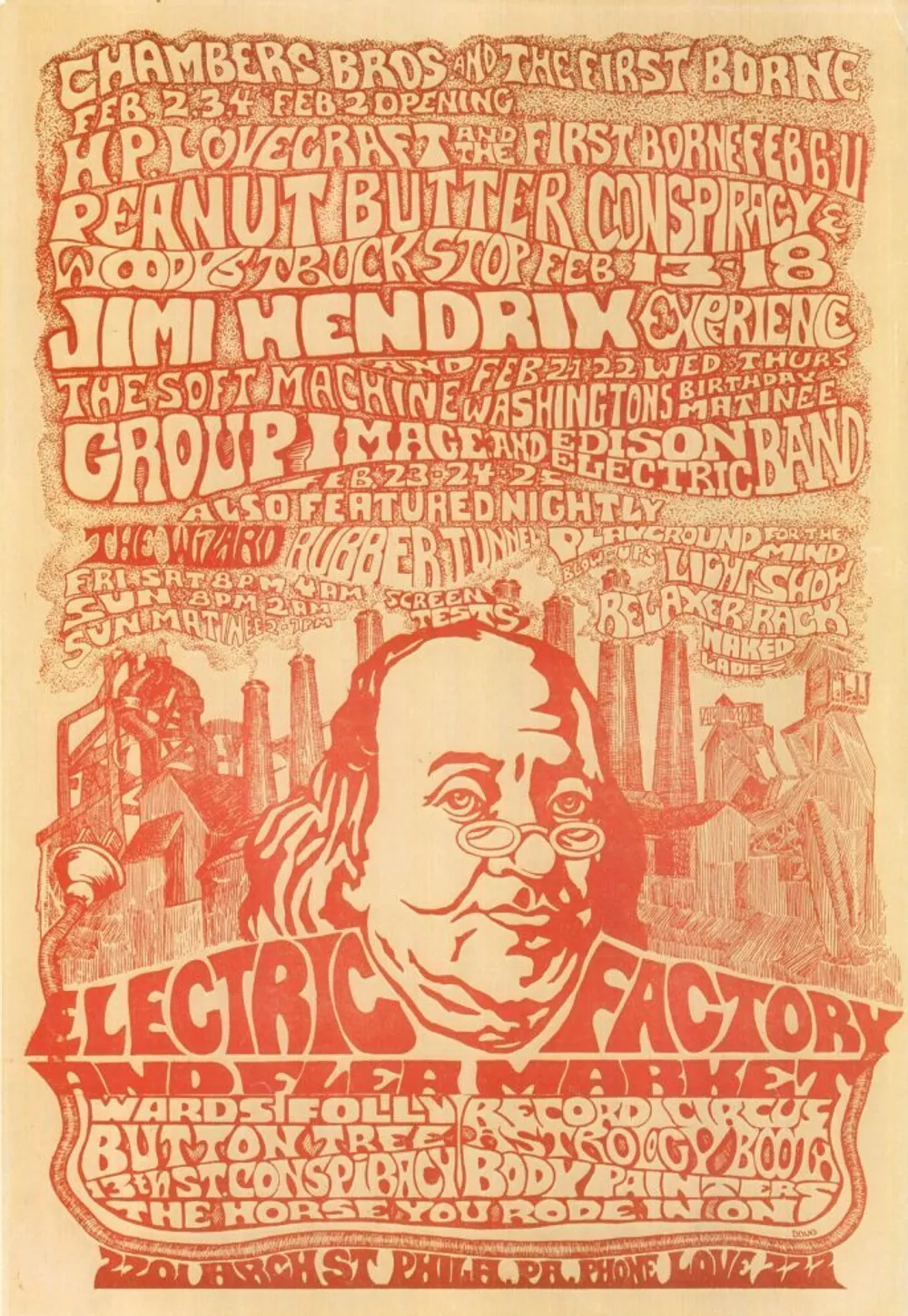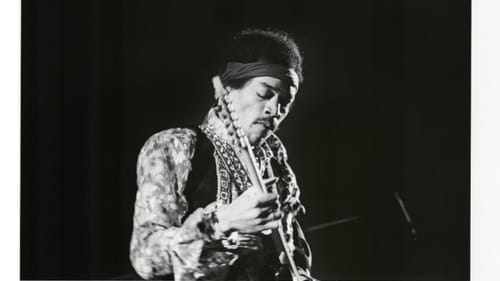Stay in the Loop
BSR publishes on a weekly schedule, with an email newsletter every Wednesday and Thursday morning. There’s no paywall, and subscribing is always free.
Reelin’ in the years
Drexel University presents Electrified: 50 Years of Electric Factory

If you danced at the Spectrum, haunted the Bijou, or staked out space on Belmont Plateau, go directly to Drexel University: the soundtrack of your youth is waiting.
Electrified: 50 Years of Electric Factory traces the development of the concert experience through a homegrown partnership that became the largest promoter of popular music in the United States. From the late 1960s to the 2010s, Electric Factory and its producing offshoot Electric Factory Concerts (EFC) introduced and elevated artists, shaped musical taste, gave rising generations an outlet for expression and identity, and made Philadelphia an essential stop for major tours. The show is free and open to the public.
Electric Factory firsts
Whether you came of age during the British Invasion, Live Aid, or Black Eyed Peas era, the exhibit, spread across two buildings, will unleash memories with original instruments, posters, photographs, album covers, newspaper articles, apparel, and memorabilia. Artifacts have been gathered from individual collections, including that of Electric Factory co-founder Larry Magid, with whom the exhibit was curated, as well as Temple University’s Special Collections and Research Center, which holds the Electric Factory archive.
In 1967, Magid, then a young talent agent, connected with Herb Spivak, who owned a jazz club and wanted to create a venue for popular music, which was evolving rapidly. They transformed a vacant warehouse at 22nd and Market into Electric Factory, which opened on February 2, 1968, with the Chambers Brothers and the First Borne to a crowd that included playwright Tennessee Williams. In the next three months, the bill featured Jimi Hendrix, Janis Joplin, and Cream, including guitarist Eric Clapton and bassist Jack Bruce.
Bruce’s psychedelically painted bass is one of several iconic guitars to see. Others are Bruce Springsteen’s Fender Telecaster, Springsteen’s favorite for 30 years and the guitar most played in Philadelphia—at least, among famous electric guitars—and also the 1958 Gibson Les Paul guitar played by Mick Taylor at the Spectrum during a 1972 Rolling Stones concert.
Music for turbulent times
Start in the red brick Paul Peck Alumni Center at 31st and Market, a structure designed in 1876 by Frank Furness as a bank. It served visitors attending America’s centennial exposition in Fairmount Park.
Displays here set the scene. The world seemed aflame in the late 1960s, and music was a means of protest and escape. Postwar 1950s optimism had given way to assassinations, civil-rights marches, urban riots, war protests, fears of nuclear conflict, and shattering social norms. In 1967 San Francisco, the Hippies had just wrapped up the Summer of Love, while in 1968, the Beatles decamped to India to meditate with Maharishi Mahesh Yogi.
Electric Factory’s memorable opening-night poster featured Ben Franklin, lips pursed in disapproval, looking over his pince-nez. The words “Electric Factory” form his shoulders, and he’s surrounded by band names that look like they’ve been squeezed from a toothpaste tube. At the bottom, Electric Factory’s telephone number: LOVE-222.
Album sleeves illustrate the cultural changes afoot, including two from the Beatles, Revolver (1966), featuring Klaus Voorman’s line drawings of the principals, and the surreal cornucopia of Sgt. Pepper’s Lonely Hearts Club Band (1967) by Jann Haworth and Peter Blake. Further on is a reminder of the range of music Electric Factory presented: the cover of Live at the Bijou, by jazz saxophonist Grover Washington Jr., recorded at the Bijou in May 1977.

Select your soundtrack
The late 1960s brought a second invasion of British bands—The Who, The Kinks, Rolling Stones, Moody Blues, Led Zeppelin, and Pink Floyd—all of whom performed in Electric Factory venues. Besides sounding different, music was being consumed differently. The jukebox, a stalwart in public spaces, was giving way to the personal portability of the transistor radio. Drexel visitors can try out a Rock-Ola jukebox loaded with numbers heard at Electric Factory venues and concerts, but the experience is whiplash-inducing: select your oldie standing in the 19th-century building from the mid-20th-century jukebox using a 21st-century digital tablet.
How will you orchestrate your hurtle down memory lane? Don McLean’s “American Pie”? Joni Mitchell’s “Big Yellow Taxi”? Bob Marley’s “No Woman, No Cry”, Wings’s “Live and Let Die,” Stevie Wonder’s “Superstition,” or maybe John Denver’s “Take Me Home, Country Roads”?
Thinking bigger
By the time the first Electric Factory closed late in 1970, Magid was a partner in the enterprise, and the founding group, which included Spivak’s brothers Jerry and Allen, and Shelly Kaplan, formed EFC. Seeking larger venues, EFC recognized that sports arenas, empty much of the time, were perfect. They began booking Philadelphia’s Spectrum, which had opened in 1967, and the even larger John F. Kennedy Stadium.
At JFK in 1985, EFC co-produced Live Aid, the largest simultaneous stadium concert at that time. Masterminded by Bob Geldof and Midge Ure to fundraise for an Ethiopian famine, the concert was presented on July 13 at JFK in Philadelphia and Wembley Stadium in London. About 162,000 attended at the dual locations, plus 1.9 billion who watched the live broadcast in 150 nations.
Intimate venues remained important for presenting smaller acts and emerging artists. In 1972, the group opened Bijou Café at 1409 Lombard Street and operated it for the next decade. EFC also mounted concerts at the Theatre of the Living Arts, contributing to the revitalization of the South Street neighborhood, and at Upper Darby’s Tower Theater.
In 1995, Herb and Allen opened a new Electric Factory at 421 North 7th Street. The club remained in their hands even after EFC was sold in 2000, becoming Live Nation.

Turn-of-the-century treasures
Electrified continues next door in the Bossone Research Center with items representing the 1980s to the 2010s. There are artifacts from Live 8, 2005’s follow-up to Live Aid, including Magid’s custom guitar, shaped like the African continent. Consisting of 10 simultaneous concerts, it was organized by Geldof and Bono to focus world leaders on poverty and debt forgiveness.
Several items from Magid’s collection are here, including a tambourine signed by Stevie Nicks, a drumhead autographed by Ringo Starr, and a 1992 white Fender Telecaster inscribed, “Thanks Larry, Bruce Springsteen.” And one thing more, which contains more history than anything else on view: Magid’s rolodex. If you don’t know what a rolodex is, never mind.
Despite directional cues (look for Franklin’s visage between buildings), navigating Electrified can be tricky. Seeing every item, however, isn’t the point. Whatever you see will trigger memories. So wander and reminisce about the music, the time, and Philadelphia’s magical, live jukebox.
At top: A memorable opening night: the first Electric Factory poster features the face of Ben Franklin. (Image courtesy of Drexel.)
What, When, Where
Electrified: 50 Years of Electric Factory. Through December 30, 2023, at Drexel University’s Paul Peck Alumni Center and Bossone Research Center, 3102 and 3140 Market Street, Philadelphia. Free. (215) 895-2000 or drexel.edu.
Accessibility
The Paul Peck Alumni Center has an accessible entrance at the rear of the building on Perelman Plaza. Visitors can ring the bell for staff assistance entering and accessing the elevator. The Bossone Research Center lobby can be entered from Market Street and has an elevator. Questions can be directed to [email protected].
Sign up for our newsletter
All of the week's new articles, all in one place. Sign up for the free weekly BSR newsletters, and don't miss a conversation.
